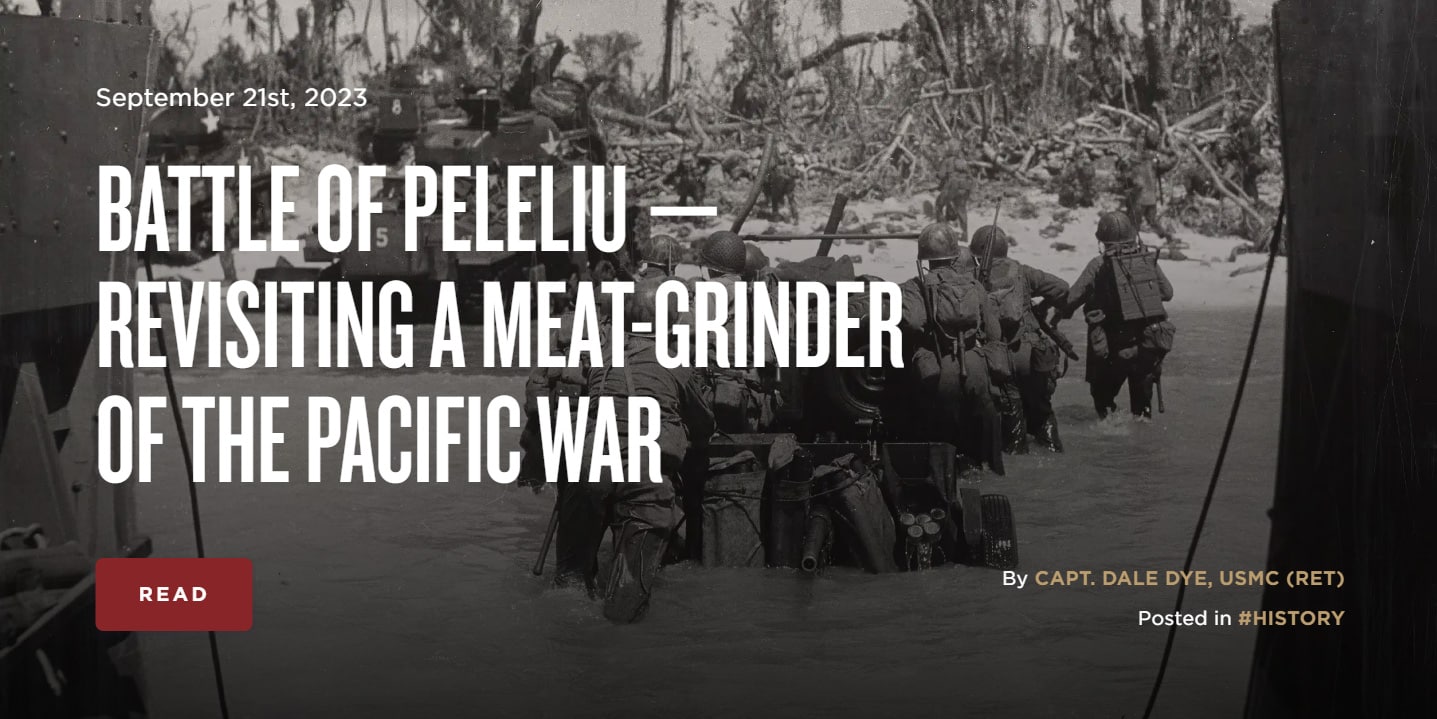Hello all, here is today's article posted on TheArmoryLife.com. It is titled “Battle of Peleliu — Revisiting a Meat-Grinder of the Pacific War” and can be found at https://www.thearmorylife.com/battle-of-peleliu/.



Great article, thanks for posting. I've had the privilege of talking to a few World War II veterans over the years.Hello all, here is today's article posted on TheArmoryLife.com. It is titled “Battle of Peleliu — Revisiting a Meat-Grinder of the Pacific War” and can be found at https://www.thearmorylife.com/battle-of-peleliu/.

I train in FMA (Filipino Martial Arts) and I used a Bolo when I was in the Philippines. They are handy tools.One thing he did say was that a lot of them put thier Marine Corp bolo knives to good use in the jungle, and it was not just on palm trees. Told me that when he gave it to me, I have since handed it down to his grand daughters husband when it got to heavy for me to swing for long periods.
I have used bolos, barongs, and parangs extensively and I have to say the Marine corps bolo/hospital is far heavier and more clumsy for its size than any genuine native product. It works, yep its wicked, but its heavy and wears your arm out faster than any machete or belt ax I have used. It's not a tool for extended jungle sessions which is why I gave it away.I train in FMA (Filipino Martial Arts) and I used a Bolo when I was in the Philippines. They are handy tools.
I grew up in South Texas and was taught how to use a machete when I was young by a landscaper who was born in Mexico and moved to the US as a young adult. I have a couple of machetes that I still use and train with.
The Moros from the Philippines were/are considered some of the best fighters with blades in the world. Marines got the nickname "leatherneck" from the leather collars they had to wear to protect against the blades from Filipino warriors back in the day.
My father, who spent his time as an MP on Oahu (he was there when the Japanese attacked) told me that my middle name, Paul, was given in honor of his best friend, who died on Peleliu. His name was Lawrence Paul.Hello all, here is today's article posted on TheArmoryLife.com. It is titled “Battle of Peleliu — Revisiting a Meat-Grinder of the Pacific War” and can be found at https://www.thearmorylife.com/battle-of-peleliu/.

Yes sir, I understand...I have used bolos, barongs, and parangs extensively and I have to say the Marine corps bolo/hospital is far heavier and more clumsy for its size than any genuine native product. It works, yep its wicked, but its heavy and wears your arm out faster than any machete or belt ax I have used. It's not a tool for extended jungle sessions which is why I gave it away.
Actually, i believe, that's a fairly common misconception. If my memory is correct, the Marines were issued the leather collars in the late 1700s for use against swords. The Brit Royal Marines were issued a similar collar and thier knickname for it was boot neck and it eventually was turned in leatherneck for US Marines.I train in FMA (Filipino Martial Arts) and I used a Bolo when I was in the Philippines. They are handy tools.
I grew up in South Texas and was taught how to use a machete when I was young by a landscaper who was born in Mexico and moved to the US as a young adult. I have a couple of machetes that I still use and train with.
The Moros from the Philippines were/are considered some of the best fighters with blades in the world. Marines got the nickname "leatherneck" from the leather collars they had to wear to protect against the blades from Filipino warriors back in the day.
